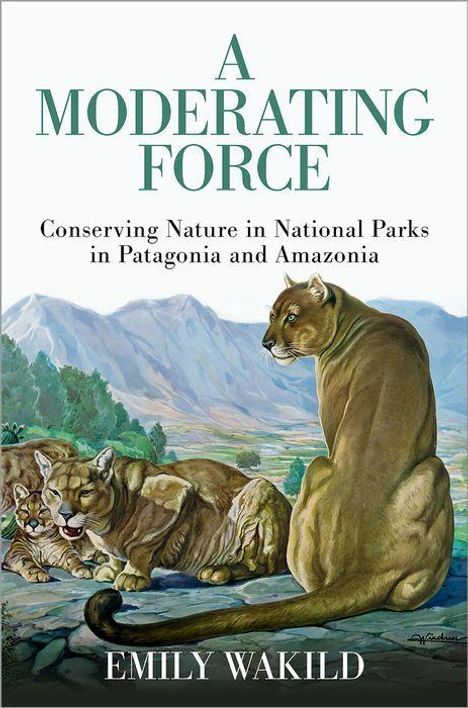Emily Wakild: A Moderating Force, Kartoniert / Broschiert
A Moderating Force
- Conserving Nature in National Parks in Patagonia and Amazonia
Sie können den Titel schon jetzt bestellen. Versand an Sie erfolgt gleich nach Verfügbarkeit.
- Verlag:
- Oxford University Press, 01/2026
- Einband:
- Kartoniert / Broschiert
- Sprache:
- Englisch
- ISBN-13:
- 9780197654026
- Artikelnummer:
- 12485295
- Umfang:
- 256 Seiten
- Erscheinungstermin:
- 28.1.2026
- Hinweis
-
Achtung: Artikel ist nicht in deutscher Sprache!
Weitere Ausgaben von A Moderating Force |
Preis |
|---|---|
| Buch, Gebunden, Englisch | EUR 191,33* |
Klappentext
Over the past century, landscapes across South American fundamentally changed. As forests were felled, cities and highways built, and agricultural land was managed, national governments set aside protected landscapes in certain charismatic places. These areas- which include some of the most iconic nature reserves on the planet, from Amazonian forests to Patagonian ice fields. -have direct bearing on the world's climate system, the regulation of carbon in the atmosphere, and the protection of species. They are home to hundreds of thousands of Native peoples and millions of mixed-race and European settlers. Today, more than a quarter of South America lies within conservation areas.
In A Moderating Force, award-winning Latin American environmental historian Emily Wakild relates a transnational comparative history of two paradigmatic regions-the temperate southern third of South America known as Patagonia and the tropical expanse known as Amazonia. Wakild traces the development of national parks in Argentina, Chile, Peru, and Brazil from the nineteenth to the twenty-first century, explaining the historical processes that led to nature conservation at the national level. She explores the many different perspectives and priorities that contribute to deciding what makes the "best" park and for whom- wild animals, Indigenous residents, national heritage, tourism, or climate resiliency. As the parks were built, they served as a moderating force softening national power by imposing compromises on diverse landscapes. From these sites, politically powerful, scientifically trained, and dedicated resident conservationists navigated new professional platforms and launched studies of flora and fauna that prioritized expertise to be gained in the field. This wide-ranging study sheds new light on exploration, state-making, scientific practice, economic development, and nature conservation in the past to inform what this history means for our future.

